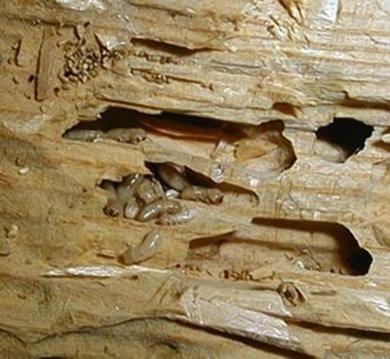5 Home Disasters- and How To Mitigate Them
 Mold
Mold
Caused by excessive moisture build-up, flooding, leaky roofs, and indoor plumbing problems, the elusive—and often, undetectable—mold can cause serious allergic reactions and long-term health problems. To prevent it, keep indoor humidity low, prevent moisture build-up, and thoroughly dry any standing wet surfaces in the home.
Mitigation:
First, consult the EPA’s Web site and read about the different levels of mold infestation and the levels of protection they require, both for you and for the rest of your house. Mold spreads by sending out millions of airborne spores. Disturbing a mold infestation can send the spores flying and make your problem worse and more widespread unless you seal off the area and protect yourself. With visible mold in moisture-rich places like your bathroom, a little elbow grease, soap and water or a 1:9 bleach-to-water solution may just do the trick.
Asbestos
Typically uncovered in the basements and attics of homes built before the 1970’s, asbestos has been linked to serious health problems, including lung cancer and mesothelioma. If you uncover asbestos that you can’t avoid or encapsulate-or are unsure if your house contains asbestos-find a certified asbestos consultant in your area and request a home evaluation.
Mitigation:
Professional asbestos removal involves sealing off the affected area, encapsulating the asbestos-contaminated material, and then safely removing it from the site. To ensure that there is no conflict of interest, be sure to use one asbestos professional to evaluate your home and a different asbestos abatement firm to do the actual work. Always ask for proof of certification and get copies of all the paperwork that documents that your asbestos was removed in accordance with state and federal procedures. Photos of how materials were handled and removed should also be included in documentation.
 Lead
Lead
If your house was built before 1980, it may contain lead paint. Lead test kits can confirm your suspicions, but you’ll have to hire a certified professional to remove and dispose of the paint if your test turns up positive for lead. Long-term exposure to lead paint is particularly dangerous to young children.
Mitigation:
If you’re hiring contractors to do the job, find out if they’re certified by the EPA to do lead-safe demolition. If they’re not, find someone who is. The process is strictly regulated now, and violations carry stiff fines. Lead-safe demolition can seem pretty dramatic, with workers in hazmat suits and masks. But it’s worth it to make sure the job is done right.
Radon
This radioactive gas comes from the natural breakdown of uranium in soil, rock, and water, and can move up through the ground into your home through cracks and other holes in the foundation. It has been linked to lung cancer, so mitigating radon in your home is critical. You can find many kinds of good, low-cost DIY radon kits in the marketplace. But you may prefer hiring a qualified tester, especially when buying or selling a home.
 Mitigation:
Mitigation:
Follow guidelines from the Environmental Protection Agency to eliminate radon or at the very least lower the levels at which it appears:
• Introduce a gas-permeable layer of gravel beneath the foundation of your house.
• Seal any cracks or damaged patches in the concrete flooring of your basement.
• Install an attic fan (a secondary junction box may be required for the wiring).
• Run a vent pipe from the ground beneath your house to an exhaust point above the roof.
A vent pipe (usually PVC) may be incorporated into new construction plans or added onto an existing home. Is installing an attic fan absolutely necessary? That depends on the detected levels of radon in the home. The higher the levels the more urgent the need.
Termites
Many favorable conditions attract termites, including moisture accumulation near a foundation and wood or dead plant material left on the ground for extended periods. Prevention is key, but if you’re facing a termite infestation, you’ll likely need to call in a seasoned pro.
 Mitigation:
Mitigation:
The two major methods of elimination are termite baits and liquid termite treatments. Termite baits are placed around the home and gradually eliminate the population as workers carry the pesticides back to the colony. Liquid treatments are sprayed around the home to kill and repel any termites coming into contact with the chemicals.
Another treatment option is borate. Typically used in new construction, borate is applied directly to the wood of the house as a coating.
